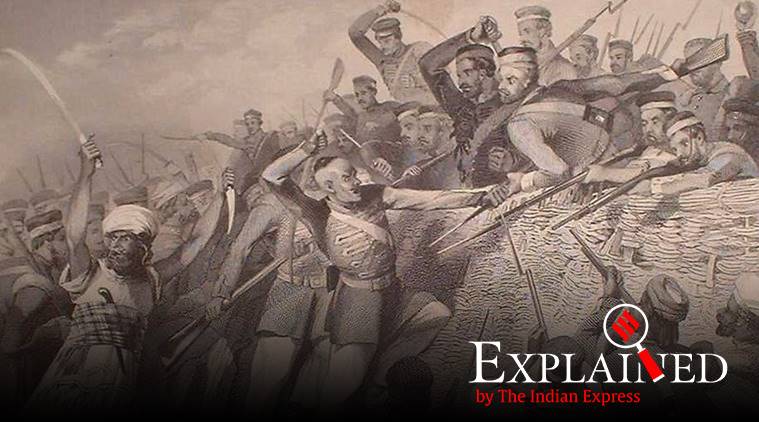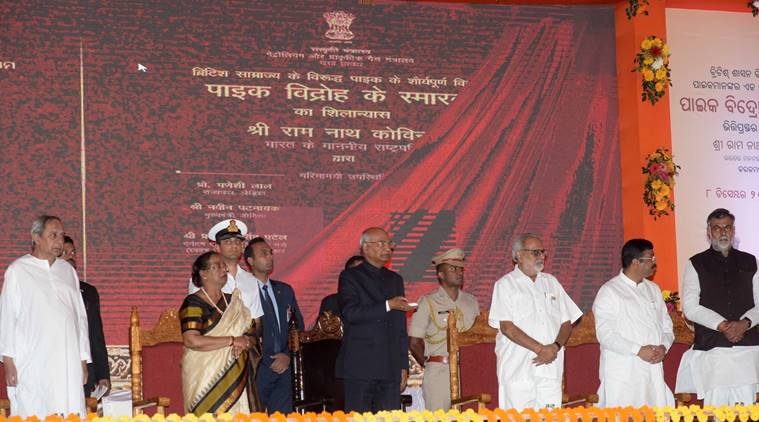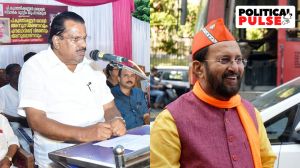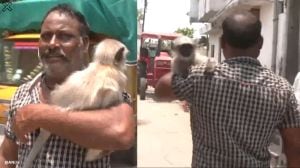- India
- International
Explained: Who were the Paikas of Odisha, and what will the Paika Memorial celebrate?
President Ram Nath Kovind on Sunday laid the foundation stone for the Paika Memorial which will come up in a 10-acre plot at the bottom of Barunei Hill in Odisha's Khurda district.
 Paika Bidroha (Source: Wikimedia Commons)
Paika Bidroha (Source: Wikimedia Commons)
President Ram Nath Kovind on Sunday (December 8) laid the foundation stone for a memorial to mark 200 years of the Paika Rebellion, an uprising against colonial rule that predates the rebellion of the sepoys in 1857, and is sometimes described as the first war of independence.
The Paika Memorial will come up in a 10-acre plot at the bottom of Barunei Hill in Odisha’s Khurda district.
Did the Paikas lead India’s “first war of independence”?
Through the 19th century, on either side of the great revolt of 1857, India’s vast rural areas were alive with discontent that periodically manifested itself in resistance against old inequities and new hardships. These uprisings coincided with the military expansion of the British East India Company inside India, and forced disruptions in existing social relations in peasant and tribal communities.
Because these expressions of discontent coincided with traditional society coming into contact with European colonialists and missionaries, the uprisings are seen as expressions of resistance against colonial rule.
This is the reason why several recent descriptions of the Paika Rebellion in Odisha’s Khurda in 1817 have referred to it as the “original” first war of Indian Independence.

So who were the Paikas, and why did they rise in revolt?
The Paikas (pronounced “paiko”, literally ‘foot soldiers’), were a class of military retainers had been recruited since the 16th century by kings in Odisha from a variety of social groups to render martial services in return for hereditary rent-free land (nish-kar jagirs) and titles.
The advent of the British and establishment of colonial rule brought new land revenue settlements, which led to the Paikas losing their estates.
 President Kovind laid the foundation stone of the memorial for Paika Vidroh at Barunei Hill, Odisha on Sunday. (Source: Twitter/@rashtrapatibhvn)
President Kovind laid the foundation stone of the memorial for Paika Vidroh at Barunei Hill, Odisha on Sunday. (Source: Twitter/@rashtrapatibhvn)
Before and after the revolt of the Paikas in Khurda came risings in Paralakhemundi (1799-1814), Ghumusar (1835-36) and Angul (1846-47); the rebellion of Kondhs in Kalahandi (1855); and the Sabara Rebellion of 1856-57, again in Paralakhemundi.
“Many of these [uprisings in Odisha] were led by propertied sections whose position was undermined by colonial interventions. Nevertheless, they mobilised large sections of peasants, tribals and outcastes against the British. These sections had been angered by the disruptions and dislocations caused by the colonial agrarian settlements which had seriously interfered with their lives and undermined their existence,” Biswamoy Pati, former professor of history at the University of Delhi and an authority on peasant movements in Odisha, wrote in a June 2007 paper.
How exactly did colonialism trigger discontent in Odisha?
Colonialism formally entered Odisha in September 1803. Colonel Harcourt marched virtually unchallenged from Madras to Puri, and faced only feeble Maratha opposition onward to Cuttack.
The following year, the British razed Khurda’s Barunei fort by cannon, arrested the king, Gajapati Mukund Dev II, and banished him to Puri. Over the next several years, as the British went about introducing new revenue settlements in Odisha, several of the original Odia proprietors faced ruin, and land was transferred to ruthless Bengali absentee landlords, often for a pittance.
The British changed the currency system, demanding revenue payments in rupees, which increased pressure on dispossessed, marginal tribals. These sections had to cope with greater demands from landlords who now had to pay taxes in silver.
As silver became costlier during the closing years of the 18th century and the early years of the 19th century, the poorest sections of the tribals and untouchable castes struggled to pay more cowries and/or grain to match the higher price of the metal.
The British control over salt — which had pre-1803-4 origins, but was extended to coastal Orissa in 1814 — also meant increased hardship for the people in the hills. There is evidence of raids on boats of salt agents near Puri during this period.
What happened during the rebellion of the Paikas?
In 1817, some 400 Kondhs descended from the Ghumusar area to rise in revolt against the British. Bakshi Jagabandhu Bidyadhar Mohapatra Bharamarbar Rai, the highest-ranking military general of Mukund Dev II, and erstwhile holder of the lucrative Rodanga estate, led an army of Paikas to join the uprising of the Kondhs.
The Paikas set fire to government buildings in Banapur, killed policemen and looted the treasury and the British salt agent’s ship docked on the Chilika.
They then proceeded to Khurda and killed several British officials. Over the next few months, the Paikas fought bloody battles at several places, but the colonial army gradually crushed the revolt.
Bakshi Jagabandhu escaped to the jungles, and stayed out of reach of the British until 1825, when he finally surrendered under negotiated terms.
Don’t miss from Explained | The seas have less oxygen now than they used to. Why — and what does this mean?
More Explained
EXPRESS OPINION
Apr 26: Latest News
- 01
- 02
- 03
- 04
- 05










































